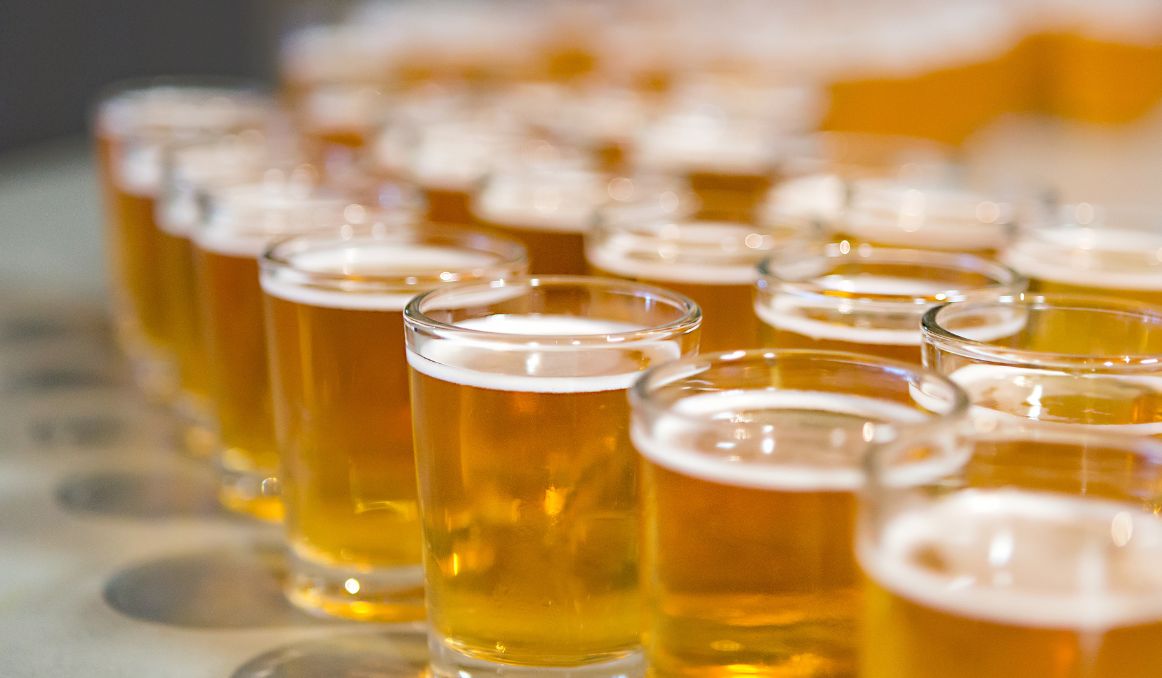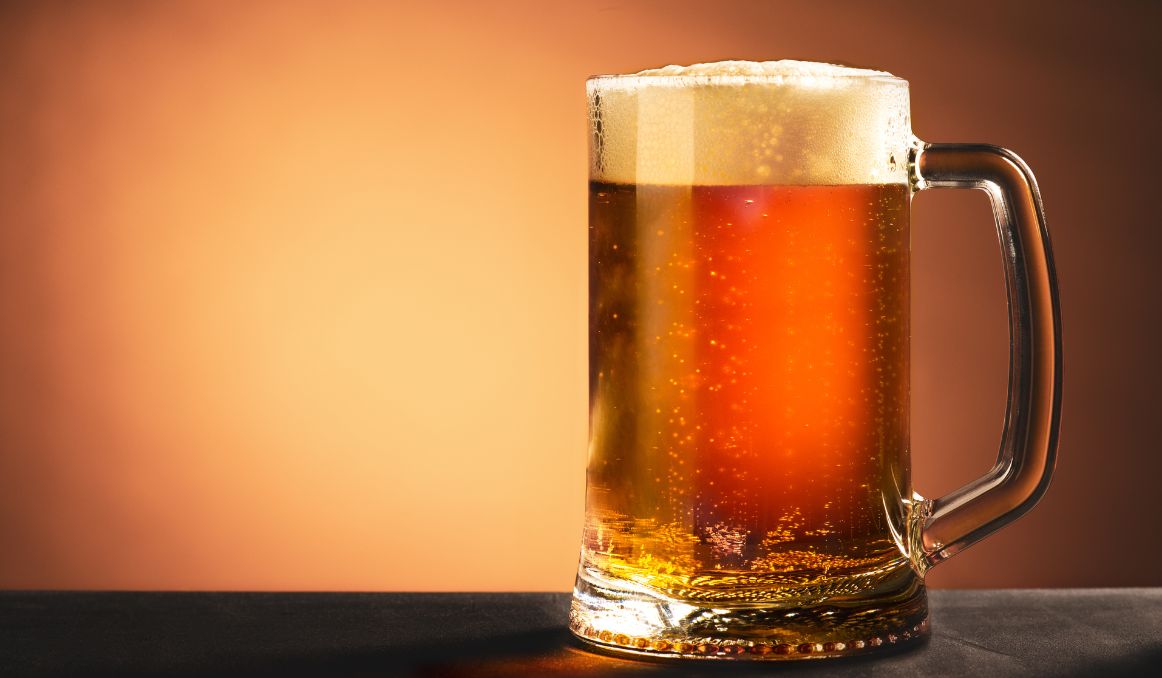Which Type of Beer Is Top Fermented?
At one point in time, for thousands of years in fact, there was only top fermented beer.
It’s true.
And what’s more, bottom fermented beer was discovered by accident.
So, what’s the story?
It’s all about the yeast.

Yeast and Fermentation
Yeast has one job, and one job only – to ferment.
It has been around since essentially the beginning of life, at least as we know it. Yeast is a fungus, and fungi were the first living organisms on earth.
It is a single celled, eukaryotic life form that is quite miraculous in its own right.
It can reproduce sexually or asexually, and it can thrive, and ferment, in both aerobic and anaerobic environments.
Its only real problem in the world is with heat. It cannot survive temperatures above 120 degrees Fahrenheit.
Otherwise, yeast will keep living its best life, doing what it has done for millions of years – finding sugar to consume and convert to alcohol and carbon dioxide.
Yeast has been doing this job, and this job only, since it was born. Indeed, it was born to do this job and this job only.
At first, yeast would find its own sugar to consume and convert, leaving the world full of fermented fruit that had fallen and ripened.
Yeast is naturally attracted to sugar, of course, and the riper fruit gets, the more concentrated its sugar content becomes, which is even more attractive yeast.
Yeast then settles on that fruit and gets to work.
Interestingly, monkeys discovered this natural phenomenon and began waiting for fruit to ripen and ferment. Then they would enjoy drunken weekends gorging themselves in alcoholic fruit.
Later, tribes of monkeys were discovered to be tapping palm trees for their sap, collecting the sap in some sort of receptacle, and then leaving the sap out to ferment.
Of course, drunken monkey weekends followed.
It is no wonder then that humans have been making wine since before we were even human. It is not unreasonable to imagine that as we evolved, our winemaking skills evolved with us.
After all, wine is simply crushed grapes left out to ferment.
Yeast and Beer
Beer, however, is a bit trickier.
You see, beer is made from grain, usually barley, but also sometimes wheat or oats, and those grains simply do not have the same natural sugars that fruit has.
In the beginning, anthropologists speculate that beer was invented/discovered by a woman out harvesting her grain.
The thinking goes that perhaps a storm struck, and she left her grain out in the rain.
By the time she returned, her grain would have been covered by rainwater and soggy.
But we’re talking about thousands of years ago. Food was nothing to simply waste and toss aside.
She would, of course, have made use of both the soggy grain, turning it into bread, and the grainy rainwater, knowing it was fresh.
To her and her family’s delight, the soggy grain would yield a rising dough, thanks to the yeast, and the rainwater would have yielded two blessings: a slight euphoric effect from the low alcohol content, and purification of any contaminants thanks to the alcohol in the liquid.
From there, word would have spread about this amazing new beverage that was both healthy, rich with grain nutrients, and mood lifting.
Top Fermented Beer

This new beverage was top fermented beer.
It is the simplest and most straightforward of beers as it is the product of yeast naturally attracted to the sugars in the liquid.
Top fermented beer is made from the same yeast that makes wine and bread. The true queen of yeasts, Saccharomyces cerevisiae.
S. cerevisiae is highly common and prevalent in the air, which is what has led to so many amazing discoveries like wine and beer.
One of factors that makes this yeast so common is that it thrives in warmer weather.
So when fruit grew, fell, and ripened, the weather was ideal for fermentation.
When wine grapes had been crushed and left out in the warm Mediterranean after harvest, the weather was ideal for wine fermentation.
And so it goes also with the grain in wort for beer.
In fact, we only now use the terminology “top fermented beer” because we now have bottom fermented beer.
In essence, top fermented beer is beer that ferments at warmer temperatures, from 50 to 77 degrees Fahrenheit, and whose yeast collects on top the liquid.
When top fermented beer ferments, you can see the yeast bubbling and agitating, doing their thing, and at the end, the yeast will collect, or “flocculate,” in a big group on the surface of what is now beer. That’s how you will know it is done fermenting, and you can crop it to repitch it into a future batch.
In general, we call this kind of beer “ale.”
Bottom Fermented Beer
In contrast, bottom fermented beer ferments at much cooler temperatures, from 41 to 50 degrees Fahrenheit, and fermentation takes place closer to the bottom of the vessel. Yeast will then flocculate on the bottom of the liquid when it has finished converting all the sugars in the liquid to alcohol.
Interestingly, we only have bottom fermented beer due to another happy accident.
It was a mere few hundred years ago, in the 1400s in Bavaria, when some beer making monks thought to store their fermenting beer casks deep in the cool caves.
There, the wort they had been working on attracted an entirely different type of yeast, Saccharomyces pastorianus, which requires cooler temperatures to do its job.
The monks were pleasantly surprised by their new beverage, which we now call lager, and this lighter, crisper beer soon took off as a hit.
Today, we have only two types of beer in the world, and every variation therein belongs to one of these two families: ale, which is top fermenting, and lager, which is bottom fermenting.
And as any brewer or beer lover knows, both certainly have their merits.
Cheers!
Passionate about the beer and/or wine making process? So are we! If you’re interested in finding out how you can use our technology to control fermentation and monitor your yeast, save work hours and improve the cost-efficiency of your business, drop us a line at [email protected] or check out our product pages:
- Oculyze BB 2.0 (Better Brewing) Yeast Cell Counter App + Hardware
- Oculyze FW (Fermentation Wine) Yeast Cell Counter App + Hardware
Also, you can now get access to a fully functional demo account to test our Web App. Completely free of charge and with no commitment to purchase.


